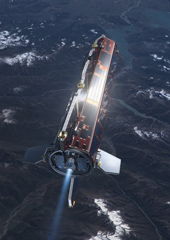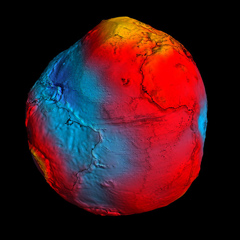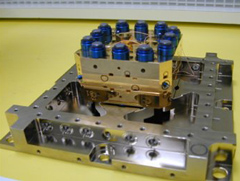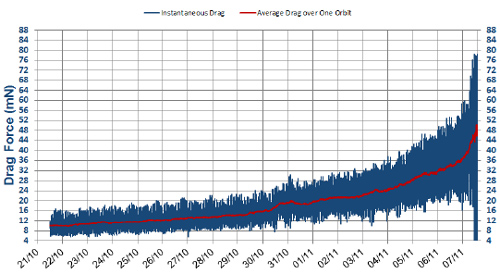The GOCE satellite?s mission (2009-2013) lasted two years longer than expected, collecting exceptionally accurate data about Earth?s gravity. Onera?s accelerometers also made it possible to learn more about the upper atmosphere, up to the end.
Goce’s scientific objective was to map the Earth's gravitational field with high resolution, in order to in particular provide a better estimate of the reference gravitational equipotential surface. Goce’s high accuracy was a result of the combination of powerful instruments and low altitude. Goce’s main scientific customers are oceanographers and geophysicists.


An artist's representation of Goce and geoid representation obtained from its measurements. ©ESA
Goce was the first scientific mission with drag compensation. At the very low altitude of the mission - 265 km, the satellite undergoes considerable continuous atmospheric drag. Ion thrusters make it possible to cancel out the drag in the direction of motion by means of thrusts that exactly offset this drag. This control allows the satellite to move "as if" there was no atmosphere to slow it down and to maintain its planned orbit.

Onera’s ultrasensitive accelerometers were at the core of the gravity measuring devices (via the Goce gradiometer) and drag measuring devices. ©ONERA
When the satellite ran out of fuel and began its inexorable descent to Earth on October 21st, 2013, four and a half years after its launch, its scientific mission to study gravity was completed. This mission, which should have lasted 2 years according to plan, was able to be extended to obtain an exceptionally accurate geoid, thanks to the quality of ONERA’s accelerometers.
The fall to Earth occurred on November 11th. During the descent, the accelerometers continued to collect data, in downgraded mode, on the drag. This data, transmitted to the ground station, will allow a better knowledge of the air density distribution in the upper atmosphere, up to an altitude of 154 km, where the instrument was turned off due to saturated measurements. Change in the drag measured by Onera’s accelerometers, as from the stopping of Goce’s thrusters up until the end of the measurements. ©ESA
Change in the drag measured by Onera’s accelerometers, as from the stopping of Goce’s thrusters up until the end of the measurements. ©ESA




